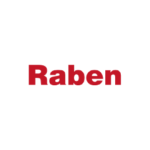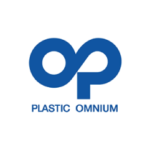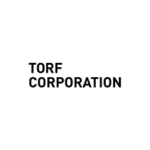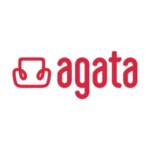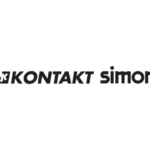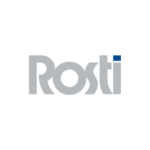Production in the electronics industry
How to deal with new challenges?
Managing production in the electronics industry, due to the nature of the sector, presents many challenges, such as the large number of purchasing components. This is combined with additional problems caused by the pandemic and the war in Ukraine. The global situation in the markets, unstable supply chains, lack of skilled workers while at the same time increasing competition, growing number of fake products or great price fluctuation make companies operating in the electronics industry look for new solutions that allow them to operate efficiently in the changing market environment.
How can IT tools meet the challenges of production management in the electronics industry?

Large number of purchasing components
The industry is characterised by a large number of SKUs. In addition, each manufactured product consists of dozens or even hundreds of purchasing components. Some of these components may be used in many different finished products. The production plan should take into account their availability in stock or planned delivery date. The plan should also reflect the available production resources. With such complex product BOMs, production planning in Excel becomes very time-consuming.
Regardless of this, the increasing rate of older generation of integrated circuits (EOL, End of Life) should be taken into account in long-term planning. Previously, such information was provided by the supplier two years in advance, but this period has now been reduced to a few weeks.
How can the production planning and scheduling process be improved as a result?


Solution – advanced production planning and scheduling
The ASPROVA APS production planning and scheduling system allows quick MRP balancing. It provides the possibility to plan the use of available components in various production orders so that the schedule is the most optimal from the point of view of the company’s interests. ASPROVA enables to take into account not only the available components and planned availability, but also all the resources required to produce a given product.
What’s more – in APS you can map 100% the specifics of your plant. Processes in your organisation have additional constraints? No problem. ASPROVA APS can reflect all process conditions and constraints, making your production plan realistic and feasible and taking no more than a few minutes to create.
What other possibilities does ASPROVA APS offer for production planning?

High expectations of customers
The requirements of large customers are becoming more and more demanding, both in terms of the quality of the products they buy, as well as delivery times, reduced order sizes, personalisation and transparency of the materials and technologies used. Ecology and the ability to recycle products at a later date is also an important aspect.
A threat emerging in the industry is the increasing number of fake components and products that are of very low quality.


Solution – monitoring and recording production with traceability
The XPRIMER.MES system, together with the traceability module (TRC), allows monitoring of production processes, recording the quantity of correct and defective products and recording the causes of shortages. This directly improves the quality of production and boosts productivity, which translates into an increase in your company’s competitiveness, as you can produce more with the same resources.
Apart from the fact that the MES system collects detailed data on the progress of your production processes, it allows to immediately verify the origin of the individual components used in a production batch and enables to track every manufactured item in the distribution chain. Thus, not only do you meet the transparency requirements of demanding customers and contribute to eliminating fake products from the market and maintaining the highest quality standards, but you also reduce the potential costs associated with recalling a defective batch of products from the market.
At the same time, detailed production records facilitate the certification processes of your products.
How can you improve your production processes using information from XPRIMER.MES?

Supply chain disruption
Even today, industrial companies are still struggling with the effects of the pandemic. Supply chains have still not been rebuilt and the ongoing war means that the market is still characterised by chaos and uncertainty. Lead times for the delivery of certain components are sometimes several times longer than usual, and there is still no certainty that the component will arrive on the agreed date. Experience with supply problems has taught many electronics manufacturers to maintain large inventories (for some components, coverage must be provided six months ahead) and to plan production with large time buffers. This increases costs dramatically, blocks resources and causes difficulties in flexible reactions to changes in the market.
How to plan production efficiently in these uncertain times?


Solution – quick changes in production plans
In ASPROVA APS, you can create a new production plan with MRP recalculation in few minutes when the availability of a component has changed. You also have the option of creating alternative plans depending on defined criteria that affect e.g. production costs, lead times for priority orders and selecting the plan that best meets your and your customers’ expectations. This is particularly important when the BOM consists of multiple items that can be used in the production of different finished goods, and you need to anticipate time buffers in the plan due to possible delivery delays.
This was exactly the challenge faced by Bury sp. z o.o. – a supplier of electronics to the automotive industry, which, thanks to efficient production planning in the ASPROVA APS system, was able to face the problems associated with disrupted supply chains from the beginning of the pandemic.
How did Bury sp. z o.o. cope with production planning during the pandemic?

Strong competition
The market is becoming more and more competitive. Asian manufacturers are becoming increasingly strong, operating in the European market directly or through a network of brokers. The price level of their products is very attractive to customers, but often at the cost of long lead times and compromises on quality or the type of components used.
How can changes in production planning increase the competitiveness of a European manufacturing company?


Solution – greater flexibility and on-time delivery
Transparency, appropriate quality certification combined with operational flexibility and better on-time delivery allow to build an advantage over Asian competitors.
With ASPROVA APS‘ precise production scheduling, you are able to determine the precise delivery date. Our customers’ experiences show that by implementing ASPROVA APS, not only is the OTIF rate significantly improved, but lead times are also reduced, as it is possible to make better use of existing production resources. More precise production planning, combined with ongoing monitoring of production processes, means that unplanned changes in production can be quickly responded to. It also allows a faster and more flexible reaction to changing market conditions.
What’s more, the optimisation of production resource utilisation achieved with ASPROVA APS has a direct impact on reducing production costs, increasing business profitability and improving the competitiveness of the products’ prices.
How did Belma Accessories Systems sp. z o.o. reduce lead time by 30%?

High component price variation
Disruptions in the supply chain have a direct impact on the high dynamics of price changes for certain components. This can be seen in the persistent shortage of semiconductors, rising metal prices or problems with the availability of neon. This is combined with sharply rising energy prices and inflation, which is prevalent in all markets. Companies are looking for savings, areas for optimisation and back-up sources of supply, and are considering the possibility of using alternative components in their products, technologies and certification processes.
How can production costs be optimised?


Solution – different production plan options and calculation of TMC
Quick and efficient creation of alternative production plans and what-if scenarios in ASPROVA APS will give you answers to questions such as how a change in the production plan will affect the cost of production, whether it is worth buying a component more expensive but available sooner, or whether it is better to fulfil the order later or use an alternative component for this. This type of simulation, which gives immediate information to support decision-making, is not possible in Excel.
A useful tool that complements the APS system is the technology management module XPRIMER.TCW, in which you can not only quickly create alternative technologies, but also calculate the technical manufacturing cost of a product (TMC), projecting the level of your production costs.
How can you manage technologies efficiently using XPRIMER.TCW?

Problems with staff availability
Rising labour costs and a shortage of skilled workers make proper staff planning extremely important, taking into account not only availability but also the qualifications of the workforce. The high number of absenteeism due to the pandemic and, at the same time, the ever-increasing labour costs make production management difficult, especially in industries with low levels of automation.


Solution – proper planning of working time schedules
The XPRIMER.HRM working time planning system takes into account the actual need for employees and at the same time ensures that rosters comply with the Labour Code. The supervisor no longer has to wonder whether the planned schedule complies with the applicable regulations. Nor does he or she have to worry about the completion of planned tasks.
When planning the work schedule, the XPRIMER.HRM system takes into account the availability of employees with the right competences and even their roster requests. In case of unplanned absences, you can react quickly by changing the production schedule according to the available employees with specific skills or qualifications.
In addition, the implementation of employee self-service within the XPRIMER platform, allows you to streamline internal communication and relieve managers of the burden of dealing with employees’ holiday requests, scheduling and absence management. At the same time, the efficiency of administrative departments is increased as electronic document workflows are introduced, processes run faster, are more transparent and the risk of errors is reduced.
There is a close relationship between the human resource requirements resulting from tasks in the APS system and employees’ work schedules. Digitising the two processes makes it easier for them to communicate with each other and to achieve a balance between tasks to be completed and staff availability.
How you can gain security and transparency of operations while ensuring optimal allocation of human resources with XPRIMER.HRM?

Agreements of your buyers with your suppliers
The current market situation is changing the relationship between suppliers and final customers. Large companies that are final customers of electronic components are entering into direct strategic partnerships with suppliers of certain components (mainly chips). As a result, subcontractors of large customers are given guidelines on which batches of components from their suppliers are to go to which of their customers. This limits flexibility in production planning and locks in batches of components to a specific production order.


Solution – a wider planning horizon
In a traditional ERP system, blocking a given component for a specific customer is possible, but this does not give you the opportunity for optimal planning, which increases your company’s liquidity. By planning production in ASPROVA APS, you can extend the planning horizon and thus see whether components or semi-finished products assigned to a particular customer can be used for other production orders with shorter lead times. This way you reduce inventory and work in progress, improving the profitability of your business.
At our customers planning production in ASPROVA APS, it has been possible to reduce inventory, despite unstable supply chains, while ensuring a high OTIF rate.
How good production scheduling affects the unit costs of energy consumption?
Want to improve your production processes?
Make an appointment for a no-cost consultation with our expert









